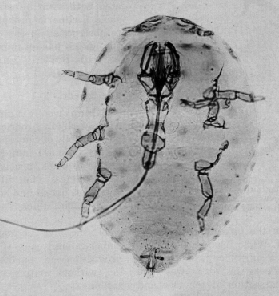Christmas tree cultivation






Christmas tree cultivation refers to the agricultural, forestry, and horticultural processes involved in the growing of Christmas trees. Christmas trees are primarily grown for decorative use during the Christmas season. The species used for these trees vary by region and demand, with species such as the Douglas fir, Balsam fir, Fraser fir, Noble fir, Scotch pine, and Norway spruce being among the most popular.
History[edit]
The tradition of using evergreen trees as a symbol during winter celebrations predates Christianity. However, the modern practice of decorating a tree for Christmas began in Germany during the 16th century. The cultivation of Christmas trees as a crop originated in the early 20th century, responding to the overharvesting of wild trees and the growing demand for Christmas trees in urban areas.
Cultivation Process[edit]
The cultivation of Christmas trees is a multi-year process that requires careful planning and management.
Site Selection[edit]
The first step in Christmas tree cultivation is site selection. Ideal sites have well-drained soil, adequate sunlight, and are protected from strong winds. The species of tree being planted will dictate specific soil and climate requirements.
Planting[edit]
Christmas trees are typically grown from seedlings, which are planted in rows to facilitate maintenance and harvesting. The spacing between trees depends on the species and the desired size at harvest.
Maintenance[edit]
Throughout the growth period, which can range from 7 to 15 years depending on the species and desired tree size, growers must maintain their crops. Maintenance activities include watering, weed control, pest control, and disease management. Pruning is also a critical task to ensure the trees achieve the desired shape.
Harvest[edit]
Harvesting usually takes place from late November through December. Trees are cut, baled, and then transported to markets. Some farms offer a "cut-your-own" experience, where customers can choose and cut their own tree directly from the field.
Environmental Impact[edit]
The environmental impact of Christmas tree cultivation is a topic of debate. Proponents argue that Christmas tree farms provide valuable green spaces, absorb carbon dioxide, and support local ecosystems. Critics, however, point to the use of pesticides and fertilizers and the carbon footprint associated with transporting trees to market. To mitigate environmental impacts, some growers practice sustainable agriculture techniques, such as integrated pest management and organic farming.
Economic Aspects[edit]
Christmas tree cultivation is an important economic activity in many regions, providing income for thousands of farmers worldwide. The industry faces challenges such as fluctuating demand, competition from artificial trees, and the long growth cycle of the trees.
Future Trends[edit]
The future of Christmas tree cultivation may include genetic improvements for disease resistance and enhanced aesthetic qualities, increased adoption of sustainable farming practices, and innovations in marketing and distribution.

This article is a agriculture stub. You can help WikiMD by expanding it!
Ad. Transform your life with W8MD's Budget GLP-1 injections from $75


W8MD offers a medical weight loss program to lose weight in Philadelphia. Our physician-supervised medical weight loss provides:
- Weight loss injections in NYC (generic and brand names):
- Zepbound / Mounjaro, Wegovy / Ozempic, Saxenda
- Most insurances accepted or discounted self-pay rates. We will obtain insurance prior authorizations if needed.
- Generic GLP1 weight loss injections from $75 for the starting dose.
- Also offer prescription weight loss medications including Phentermine, Qsymia, Diethylpropion, Contrave etc.
NYC weight loss doctor appointmentsNYC weight loss doctor appointments
Start your NYC weight loss journey today at our NYC medical weight loss and Philadelphia medical weight loss clinics.
- Call 718-946-5500 to lose weight in NYC or for medical weight loss in Philadelphia 215-676-2334.
- Tags:NYC medical weight loss, Philadelphia lose weight Zepbound NYC, Budget GLP1 weight loss injections, Wegovy Philadelphia, Wegovy NYC, Philadelphia medical weight loss, Brookly weight loss and Wegovy NYC
|
WikiMD's Wellness Encyclopedia |
| Let Food Be Thy Medicine Medicine Thy Food - Hippocrates |
Medical Disclaimer: WikiMD is not a substitute for professional medical advice. The information on WikiMD is provided as an information resource only, may be incorrect, outdated or misleading, and is not to be used or relied on for any diagnostic or treatment purposes. Please consult your health care provider before making any healthcare decisions or for guidance about a specific medical condition. WikiMD expressly disclaims responsibility, and shall have no liability, for any damages, loss, injury, or liability whatsoever suffered as a result of your reliance on the information contained in this site. By visiting this site you agree to the foregoing terms and conditions, which may from time to time be changed or supplemented by WikiMD. If you do not agree to the foregoing terms and conditions, you should not enter or use this site. See full disclaimer.
Credits:Most images are courtesy of Wikimedia commons, and templates, categories Wikipedia, licensed under CC BY SA or similar.
Translate this page: - East Asian
中文,
日本,
한국어,
South Asian
हिन्दी,
தமிழ்,
తెలుగు,
Urdu,
ಕನ್ನಡ,
Southeast Asian
Indonesian,
Vietnamese,
Thai,
မြန်မာဘာသာ,
বাংলা
European
español,
Deutsch,
français,
Greek,
português do Brasil,
polski,
română,
русский,
Nederlands,
norsk,
svenska,
suomi,
Italian
Middle Eastern & African
عربى,
Turkish,
Persian,
Hebrew,
Afrikaans,
isiZulu,
Kiswahili,
Other
Bulgarian,
Hungarian,
Czech,
Swedish,
മലയാളം,
मराठी,
ਪੰਜਾਬੀ,
ગુજરાતી,
Portuguese,
Ukrainian